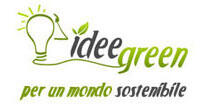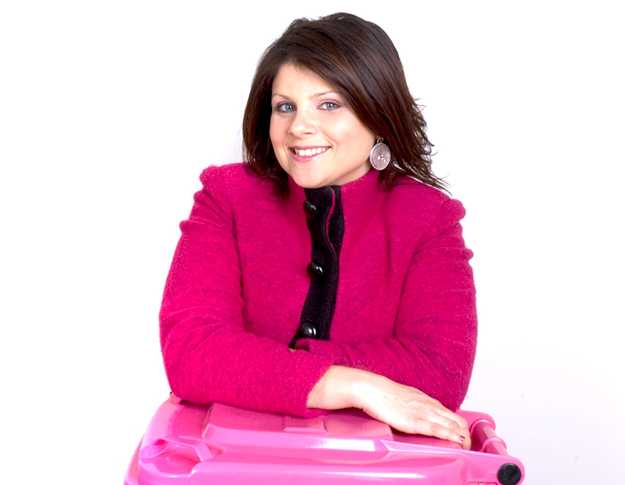Nella loro prima vita contenevano caffè, cibo per animali, succhi di frutta, patatine e quant’altro. Tania Anselmo con Garbags le ha trasformate in accessori e oggetti fashion e alla moda. Giovane, creativa e desiderosa di migliorare ogni giorno, Tania con il suo progetto aiuta a ridurre la quantità di rifiuti che riempiono le discariche e a rendere il mondo più sostenibile. E senza nulla da invidiare all’alta moda.
In their first life they hold coffee, pet food, milk, juice and potato chips and so on. Tania Anselmo with Garbags trasformed them in stylish and functional fashion items. Young, creative and eager to do everyday better then now, Tania with her project, helps to reduce the amount of waste going to landfill and to create a more sustainable world. And she’s every bit as good as haute couture designer.
1) Da cosa è nata l’idea di Garbags 100%recup? Da quando esistete?
1)How was the concept of Garbags 100% Recup born? How long has it existed?
Il nostro progetto è partito nel 2009, quando sono tornata a Lisbona dopo un periodo passato all’estero. Ho iniziato da sola e avviato il progetto raccogliendo, ideando e progettando io stessa le borse. L’anno scorso, nel 2011, dopo uno dei miei viaggi fuori dal Portogallo, ho deciso di presentare il mio progetto al mondo. Così ho formato un gruppo di lavoro e ho messo on line il nostro sito www.garbags.eu aprendo il nostro primo punto vendita, a Lisbona, vicino al Castello (Rua do Salvador, 56 in Alfama).
The Garbags project started in 2009, when I came back to Lisbon from some time travelling and living abroad. In the beginning I started alone by collecting, treating and designing the bags on my own. Last year, 2011, after one of my trips abroad, I decided to present my project to the World… so I formed a team, published our website www.garbags.eu and opened our first shop in Lisbon: Rua do Salvador, 56 in Alfama (the castle district of Lisbon).
2) Che materiali usate? Quali sono i più facili da lavorare? Quali riuscite a reperire più facilmente?
2) Which materials do you use? Which ones are the easiest to work with? Which ones can you find the most easily?
Non è affatto facile procurarsi i materiali perchè non c’è mercato per le tipologie di confezioni e imballaggi con cui noi creiamo le nostre borse. I prodotti di Garbags sono fatti di materiali che originariamente sono stati utilizzati per caffè, cibo per animali, latte, patatine e altro ancora. Le borse sono create da confezioni e imballaggi pensati per contenere da 2 a 5 Kg di prodotto, quindi sono molto robuste. Le stesse qualità che le hanno rese utilissime nella loro prima vita, rendono queste confezioni abbastanza resistenti e longeve per essere trasformate in capi di moda e accessori.
Finding the materials is not easy as there is no market for the types of packages that we create with. Garbags products are made from materials that were originally used to hold coffee, pet food, milk, juice, potato chips and more! Our bags are made with packages designed to hold 2-5kg of product so they are strong. The same properties that made them useful packages in their first lives also make them strong and durable enough to be transformed into fashion items.
3) Come vi procurate i materiali che riciclate? potete descrivere in breve il processo di trasformazione, da rifiuto a prodotto in vendita?
3) How do you get the materials that you recycle? Can you briefly describe the process of transformation from waste (garbage) to the final product?
Raccogliamo i materiali da soli, dalla nostra stessa spazzatura di casa, da quella di amici e parenti. Chiediamo anche ai bar, ai ristoranti, alle scuole e, naturalmente, ai nostri partners. Non c’è una precisa formula per la lavorazione, dipende molto dal tipo di rifiuto che abbiamo tra le mani e da ciò che io voglio creare con esso. Non dimentichiamo, però, che il momento più importante del processo è quello in cui guardiamo il rifiuto e riusciamo a vederne le potenzialità.
We collect the materials ourselves from our own household waste or from friends and family. We also collect from local café’s, bars, restaurants, schools and of course, from our eco-partners. The transformation process doesn’t have a particular formula, it depends on the type of waste and what I want it to be transformed into.
Don’t forget however, that the first and most important process we apply is the way we look at the waste and see it’s potential.
4) Oltre ai materiali riciclati, anche il processo di produzione è sostenibile e nel rispetto dell’ambiente? come?
4) Beyond the recycled materials, is the process of production also sustainable and respectful of the environment? How?
Sì, è il più possibile sostenibile. Personalmente, come fondatrice e ingegnere ambientale, ho trovato questo punto il più difficile da trattare. Ogni giorno cerchiamo di fare sempre meglio, trovando dei nuovi processi di trattamento e semplificandoli il più possibile. Naturalmente quando progetto, uno degli obiettivi è quello di creare poi l’oggetto producendo la quantità minore di rifiuti possibile: questo è il concept su cui il nostro team si basa e troviamo anche il modo per riutilizzare nuovamente i nostri stessi scarti.
Yes, as much as we can! Me personally, as the founder and an environmental engineer, I find this step the hardest to keep in balance. We try and get better day after day finding new treatment processes and keeping it as simple as we can. Of course, when I design, one of my goals is to produce the least amount of waste as I can. This is the concept that our team follows and we even find solutions to reuse our own production waste.
5) Quali sono i prodotti più richiesti? In quale parte del mondo c’è maggior interesse?
5) Which are the most requested products? In which parts of the world do you find the most interest?
Ogni giorno ho contatti con clienti internazionali nel nostro negozio, nel mercato all’interno del Castello di Lisbona e attraverso il sito web. Non saprei dire chi siano i più interessati. Ho la sensazione che nel Nord Europa e in Canada le persone sembrano essere maggiormente sensibili alle problematiche ambientali e quindi danno più valore al design ecologico. Vedo però molti sorrisi sui visi di tutti quelli che vedono i nostri oggetti, indipendentemente dalla nazionalità, e questo è uno dei lati più gratificanti del progetto. Posso dire giorno dopo giorno che sono sempre più aperte e più desiderose di contribuire.
I prodotti più richiesti sono sicuramente quelli della Coffee Collection, (fatti da confezioni di caffè usate): dalle borse alle scarpe: è quella che tutti amano di più.
I deal with international customers daily in our shop, at the market within the Lisbon castle and through our website and I don’t have an answer for “where do I find the most interest”. I can feel that in northern Europe and Canada, people seem to be more aware of environmental issues and place more value on ecological design. However, I see smiles on the faces of everyone who sees our work, independent of where they are from and this is one of the most rewarding parts of the project. I can tell day after day that people are more open and willing to contribute. The most requested products are for sure our Coffee Collection (products made from used coffee packages)… from bags to shoes, it’s what people love the best!
6) Ci sono altri materiali e altri prodotti che avete intenzione di inserire in catalogo? Quale è la prossima vostra sfida al riciclo?
6) Are there other materials and products you are going to add in the catalogue? What is your next challenge to recycle?
La sfida per riciclare nuovi materiali arriva ogni giorno nel nostro atelier: sia dalle mie idee personali, che non mancano mai, sia dai progetti che i nostri Eco-Partners propongono. Già con questi, posso tranquillamente continuare a creare per i prossimi anni. Fino a quando il mondo continuerà a produrre rifiuti, noi inventeremo sempre nuovi favolosi modi per riciclarli.
Per il prossimo anno sto preparando una collezione di zaini, sacche e valige fatti sempre con confezioni e imballaggi usati, naturalmente, ma con lavorandoli in maniera diversa dal solito.
Sto pensando anche di iniziare a riciclare e-waste (rifiuti elettronici) e sto sviluppando una collezione fatta da mute subacquee usate.
Ci sono sempre nuove idee quindi è meglio restare aggiornati consultando il nostro sito, facebook e twitter o con la newsletter per restare aggiornati.
Challenges to recycle arrive every day in our atelier: from my own ideas, which never stop, to the projects our Eco-partners propose. I could just keep creating for the next few years! As long as the world keeps producing waste, we’ll keep inventing fabulous ways to recycle it! For next year I am preparing a collection of backpacks and suitcases with used packages and containers as well, but with a different way to work it. I also plan to start recycling Electronic waste (e-waste) and I am also developing our collection made from used surf wetsuits: http://www.garbags.eu/ecopartnersshop_cn.html
Ideas never stop and I recommend you to stay in touch with us through our website, facebook or twitter and to subscribe our newsletter to see the latest developments!
7) “Friends4garbags volunteer program 2012”: di cosa si tratta?
7) “Friends4garbags Volunteer Program 2012”: what is it about?
Abbiamo capito che le persone hanno veramente voglia di contribuire al progetto Garbags, generalmente con donazioni di confezioni e imballaggi usati, ma anche cercando di trovare il modo per farci espandere e per farci raggiungere un maggior livello di riciclo. Molte persone hanno cominciato a chiederci di venire a darci una mano nel nostro lavoro giornaliero. Ho pensato: perchè no? E’ un processo molto interessante e dinamico, amiamo scambiare esperienze e nuove idee.. e abbiamo bisogno di una mano! Eccetto per particolari abilità per cui i nostri volontari vengono indirizzati in specifiche aree dove c’è maggior bisogno, noi cerchiamo persone che partecipino nelle attività di tutti i giorni che sono moltissime. Dalla raccolta di confezioni e imballaggi, al loro trattamento, dalla progettazione alla produzione e alla vendita e anche all’aggiornamento del sito web e ancora… Chiunque sia interessato a partecipare al Friends4Garbags Volunteer Program 2012 può trovare tutte le informazioni su www.garbags.eu/garbagsnews.html o può scrivere a [email protected] .
We have realized that people really like to help the Garbags project: usually with their donations of used packages, but also in trying to find ways to make us expand and reach an even higher level of recycling. Many people started asking if they could come and help in our daily work and I thought: why not? It’s a very interesting and dynamic process, we love to exchange experiences and new ideas… and we need help! Except for very specific skills of our volunteers which will be directed to areas we most need, we look for people to participate in our everyday tasks and there is plenty of it: from collecting packages, treatment, design, production, selling, website updates and on… Anyone interested in participating in the Friends4Garbags Volunteer Program 2012 can find more information at: http://www.garbags.eu/garbagsnews.html or send us an e-mail to [email protected] .

